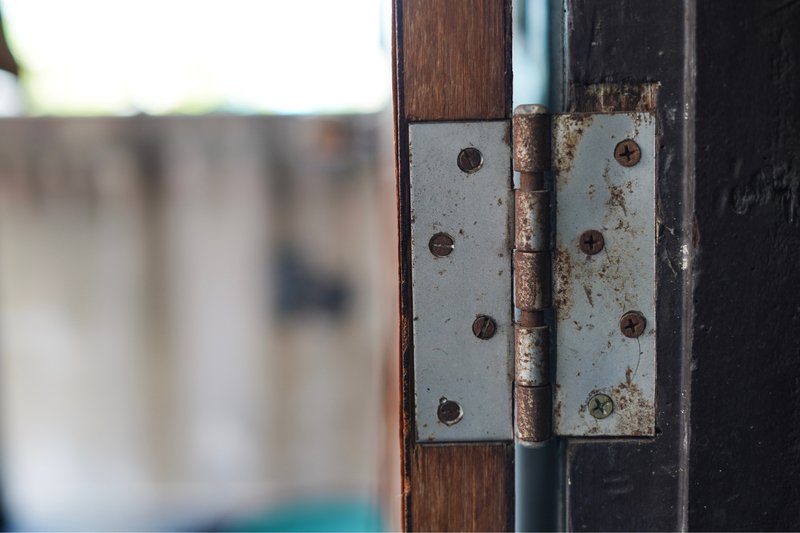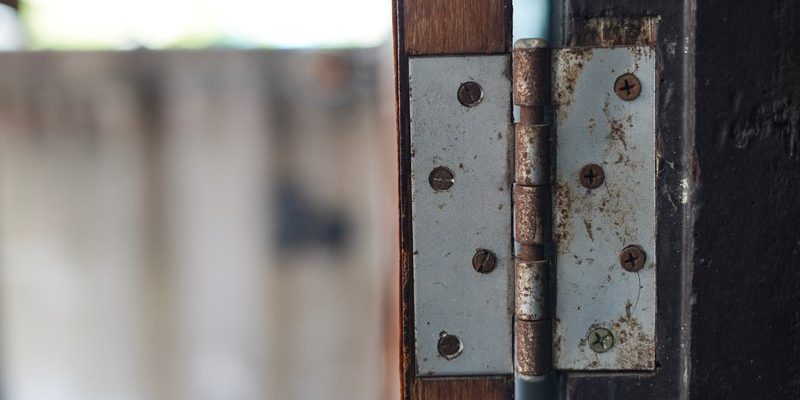
Fixing squeaky exterior door hinges isn’t just about stopping a noise. It’s about making sure your door swings smoothly, stays weather-tight, and doesn’t wear down over time. The trick is choosing a weather-resistant lubricant that won’t just wash away with the next rainstorm. No matter if your hinges are part of a fancy Schlage lockset or something more basic from the hardware store, the right approach can make even the oldest door feel brand new. Let’s break down what’s happening, how to pick the right solution, and every step you need to silence that squeak for good.
Why Do Exterior Door Hinges Start Squeaking?
Let’s start with what’s happening behind that annoying sound. When a door hinge squeaks, metal parts are rubbing together without enough lubrication, causing friction. For interior doors, it’s usually just dust or dryness. But *exterior door hinges* get hit with a lot more: rain, temperature swings, pollen, and maybe even salty air if you’re near the coast. All these things can wash away oil, leave behind grit, or cause tiny bits of rust to form.
Over time, most weather-exposed hinges start to lose whatever factory lube they had. Once that protection is gone, the squeaky symphony begins. If you ignore it, the constant friction can wear down the hinge pins, loosen screws, or even make the door harder to open and close. And honestly, a squeaky front door can drive you (and your family) up the wall. So, it’s not just a sound issue—it’s about keeping your door in good shape.
If your door has a smart lock or a heavy storm door attached, you might notice the squeaking gets worse. Extra weight or hardware can add pressure, making lubrication even more important. In short: exterior hinges need a little more attention and tougher lubricants compared to their indoor cousins.
What Makes Weather-Resistant Lubricants Different?
You might be wondering, can’t you just grab any old oil or spray? Here’s the thing—lots of common options like WD-40, 3-in-1 oil, or vegetable-based lubes aren’t cut out for outdoor duty. They’re great for a quick fix inside, but outside, they can attract dirt, break down with moisture, or simply drip away after the next thunderstorm.
Weather-resistant lubricants are designed to last through rain, heat, cold, and whatever else nature throws at your door. These products often use silicone, Teflon (PTFE), or lithium as their main ingredient. Each type has its own perks:
- Silicone spray: Goes on thin, resists water, and works in extreme temperatures. It won’t gum up or get sticky.
- White lithium grease: Thicker and more protective, great for heavy-duty hinges. It stays put for months, even outdoors.
- PTFE (Teflon) sprays: Slippery, long-lasting, and resistant to weather. Often used on garage doors and gates.
It’s worth checking what the hinge manufacturer recommends, especially if you’ve got branded hardware (like Kwikset or Baldwin). Using the right lube extends the life of the hinge and keeps everything moving as it should—without turning into a sticky mess.
Step-by-Step: How To Fix Squeaky Exterior Door Hinges
Honestly, this is one of those “simple but satisfying” home fixes. Here’s how you can tackle squeaky exterior door hinges with a weather-resistant lubricant:
1. Gather your supplies: You’ll need a weather-resistant lubricant (like silicone spray, white lithium grease, or PTFE spray), a rag or paper towels, a small flathead screwdriver or pin punch, and maybe a hammer.
2. Open the door wide: Give yourself plenty of room to work. If the door’s on a patio or stoop, watch for steps.
3. Remove the hinge pins (if possible): Most squeaks come from inside the hinge, so gently tap out each hinge pin using your screwdriver and hammer. Don’t force it—if it won’t budge, skip this step and lubricate around the hinge instead.
4. Wipe everything clean: With the pins out, clean off any old grease, rust, or debris. A rag works, but a little rubbing alcohol on a cloth can help dissolve gunk.
5. Apply lubricant: Spray or dab the lubricant onto the hinge pin and inside the hinge cylinder. If you’re using white lithium grease, a thin coating is enough—don’t overdo it.
6. Reinstall the pins and work the door: Slide the pins back in, wipe away extra lube, and swing the door open and shut a few times. This helps distribute the lubricant evenly.
7. Final cleanup: Check for drips or smears. Silicone and PTFE sprays are usually invisible, but white lithium can leave a white residue.
*Tip: If you can’t remove the pins, spray lubricant carefully into the gap where the hinge turns. Move the door to draw lube into the joint, and repeat until the squeak stops.*
How Often Should You Lubricate Exterior Door Hinges?
Fixing a squeak once is great, but keeping it gone is better. Most exterior doors only need to be lubed once or twice a year—usually in spring and fall, when weather is shifting. But if you live somewhere with lots of rain, snow, or humidity, you might want to check more often.
You’ll know it’s time to reapply lubricant if:
- The squeak comes back, especially after a storm
- You see rust forming around the hinge
- The door feels stiff or jerky when you open it
If you’re already checking batteries in a smart lock or inspecting weatherstripping for leaks, add hinge maintenance to your routine. Trust me, it saves headaches down the line.
Weather-Resistant Lubricant vs. Regular Lubricant: What’s the Real Difference?
Let me explain why grabbing the right stuff matters. *Weather-resistant lubricants* are built for survival—they stick around through rain, don’t freeze in winter, and aren’t attractive to dust or pollen. Regular household oils, like sewing machine oil or WD-40, evaporate quickly or break down outdoors. That means they stop working fast and let squeaks come back.
Here’s a simple comparison:
| Lubricant Type | Good for Exterior? | Pros | Cons |
| Silicone Spray | Yes | Resists water, invisible, works in cold/heat | Needs reapplying sooner than grease |
| White Lithium Grease | Yes | Long-lasting, thick, protects against rust | Can leave white residue, messier to apply |
| PTFE/Teflon Spray | Yes | Slippery, clean, resists dust and water | More expensive, sometimes hard to find |
| WD-40 | No | Easy to use, quick fix | Washes away, attracts dirt, squeak returns |
The upfront cost might be a couple bucks more, but you’ll save time and avoid doing the job twice.
Fixing Squeaky Hinges on Different Exterior Door Types
Not all doors are created equal—and neither are their hinges. For a plain wooden back door, most weather-resistant sprays work fine. But if you’re dealing with a metal security door, a heavy glass patio slider, or anything with a built-in electronic lock, a little extra care goes a long way.
*On heavy doors or those with built-in tech*, make sure to support the door if you’re pulling pins out. Sometimes, smart locks add weight, and you don’t want the door sagging or misaligning the latch. If your hinges are painted over, work the lubricant into the seam and move the door several times to help it seep inside.
For sliding glass doors, only use lubricants approved for aluminum or vinyl tracks—some can stain or damage finishes. Always check the label before applying, especially with branded or specialty doors.
If you’re not sure what kind of hinge or door you have, snap a quick photo and take it to your local hardware store. Staff can usually point you to a weather-resistant product that won’t void warranties or mess with finishes.
When Lubricant Isn’t Enough: Other Squeaky Hinge Solutions
Sometimes, even the toughest lubricant can’t fix every squeak. If your exterior door hinge keeps squealing after a fresh application, there might be bigger issues to troubleshoot.
- Rusty or damaged hinge pins: If pins are bent or deeply rusted, they’ll make noise no matter what. Replacing the pin (or the whole hinge) is usually best.
- Loose screws: Hinges that move or flex as you open the door can squeak. Tighten all the screws—if the wood is stripped, use longer screws or wood filler.
- Dirt and debris: Outdoor doors collect grit. If you hear a grinding sound, take the hinge apart and scrub it thoroughly before re-lubing.
- Misaligned doors: Sometimes, a badly hung door rubs against the frame, making a “squeak” that isn’t hinge-related. Adjust hinges or call a pro if this is the case.
If you keep running into trouble, replacing the hinges with new, weather-rated models can solve both noise and long-term wear. Many brands, like Schlage, Kwikset, or Baldwin, offer weather-resistant hardware designed for outdoor use. It’s a bit more work up front but keeps your door quiet and sturdy for years.
Closing Thoughts: Keeping Exterior Doors Smooth and Silent
There’s something satisfying about fixing a squeaky hinge—especially when it’s your front door and you can finally slip outside without waking up the whole house or setting off the dog. As you’ve seen, the real secret isn’t just any lubricant, but a *weather-resistant* one that stands up to the elements. A little time spent each season can save your door, your sanity, and maybe even your hardware from early retirement.
So next time you hear that telltale squeak, you know what to do: grab a quality weather-resistant lubricant, take a few extra minutes to clean and lube your hinges, and enjoy that quiet, smooth swing. It’s a tiny job, but it makes home feel just a bit more welcoming every time you open the door.
